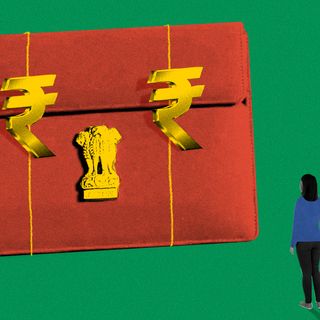
Zahad and Ziya’s Child Can Change How We Talk About Gender In India
The Indian media’s focus on the “secrecy” around the gender of the baby misses the memo on how gender works

In a first, a trans man and a trans woman couple in India recently announced the birth of their child. Zahad, a trans man, was the partner carrying the child – his pregnancy was first announced on Instagram through a photoshoot with his partner, Ziya, a trans woman. The pair have been together for three years, and had their child via Cesarean section at the Government Medical College Hospital in Kerala. As of now, they have reportedly decided not to disclose the gender identity of their baby. To a public that’s followed the couple with interest, it introduces the conversation on what gender identity means and the baggage it comes with — and how divorcing it from sex characteristics is vital for not only queer individuals but for society as a whole.
The media’s fixation on the baby’s gender thus misses the point that gender isn’t something a child is born with. Instead, news reports playing up the “secrecy” around the child’s gender play into the harmful voyeurism that cis-gender people have over not only trans individuals and their bodies, but also the bodies of children. It also betrays how society insists on imposing gender identities on individuals — purely based on sex characteristics — before they have the agency to define it for themselves. Moreover, this tendency in the media coverage around the child reinforce the same expectations that Zahad and Ziya fought to overcome.
Why does it matter that we don’t assign gender to sex characteristics? Defined as “the different biological and physiological characteristics of males and females, such as reproductive organs, chromosomes, hormones, etc.,” sex characteristics have nothing to do with gender identity, but are all too often used interchangeably with it. Gender, however, encompasses much more than simply an individual’s physiology – it comes with baggage consisting of five main elements: relational, hierarchical, historical, contextual, and institutional. “Gender refers to the characteristics of women, men, girls and boys that are socially constructed,” according to the World Health Organization, and “varies from society to society and can change over time.” The acronym SOGIESC, which stands for sexual orientation, gender identity, gender expression, and sex characteristics, helps to delineate the overlapping but distinct elements of a person’s identity.
Using gender and sex interchangeably thus reinforces the very rigid ideas surrounding gender that the baby’s parents themselves have subverted. It’s clear from Zahad’s example that men give birth – the gender roles associated with pregnancy, motherhood, and expectations around child-care as a whole, then, are turned on their head. As Simone de Beauvoir’s famous proclamation goes: “One is not born, but becomes a woman” — meaning that the expectations around the idea of a woman aren’t innate or natural, but are rather imposed on individuals.
Related on The Swaddle:
What a Transgender‑Friendly Health Care System Would Look Like
Queer philosopher Judith Butler notes how assigning the terms “girl” or “boy” to children is to participate in their creation as girls or boys – and thereby defining their roles in society for the rest of their lives. Gender is an “improvised performance” which hinges on elements like class, race, and sexuality, Butler writes, and the performance itself creates the identity – a self-fulfilling prophecy.
We do more harm than good, then, by insisting on gendering children at birth — correlating it with sex characteristics further imposes rigid gender roles. Zahad and Ziya refusing to publicly gender their child flies in the face of traditional expectations of gender identity and roles, and societal norms. Their decision encourages discussions about gender and sex, and normalizes non-traditional family units – a conversation that can (and should) be started at birth.
It’s also pivotal in introducing children themselves to the fact that gender is not a given, and that parenthood can look different. That children are by default only exposed to heterosexuality and gender divisions leads to cis-heteronormativity and monogamy being cemented as the “natural” way of things. This in turn determines how children are treated at every stage of their lives – leading to unequal outcomes. It’s the expectations that come with gender that add to this. Zahad and Ziya leaving the question of gender identity unresolved, then, reclaims agency over what gender can mean – it’s an insistence that the medical bureaucracy, the media, or society itself cannot define somebody’s gender. Nor does keeping this information private imply shame from the parents’ end.
There is a need at the school-level to have all inclusive teaching. “If educators are homophobic, they enable bullying,” Meghna Mehra from the All-India Queer Association told the Hindu, emphasizing that teachers need to be sensitized at the B.Ed. level. Dr Shweta Sharma, a clinical psychologist at Manipal Hospital feels that the dialogue about non-heteronormativity “should begin at the level of the hospital … This is natural and we need to understand it.” In fact, by incorporating all-inclusive learning from day one, children will likely grow up with a ‘new normal’ and a perspective of life and others unhindered by the societally-enforced gender constraints imposed from birth – the same gender constraints that Zahad and Ziya are unapologetically discarding with their identities, their relationship, and their child.
Akankshya Bahinipaty writes about the intersection of gender, queerness, and race, especially in the South Asian context. Her background in political science and communication have shaped her past multimedia and broadcasting experience, and also her interest in current events.
Related


Decoding the Budget Through a Feminist Lens
